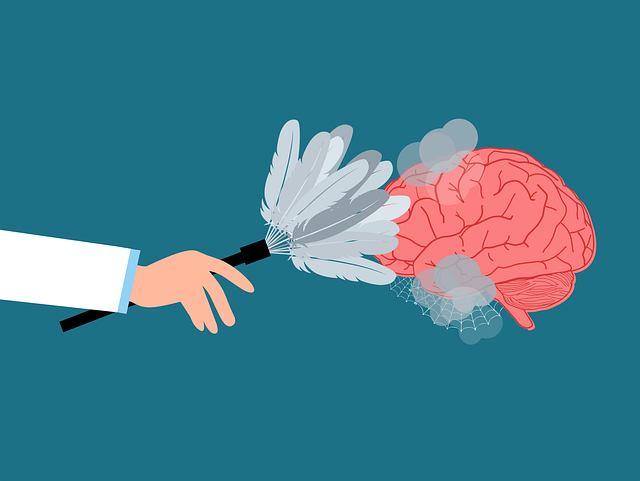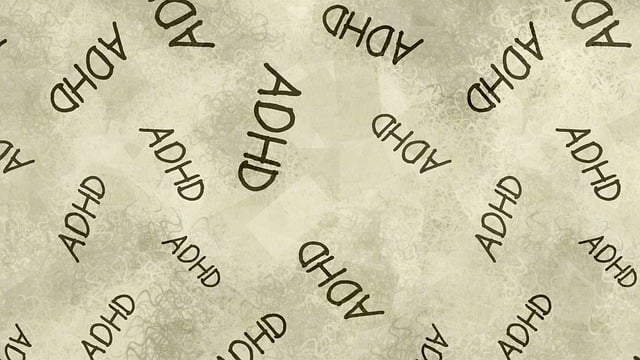Mental wellness groups for children, led by trained professionals using American Sign Language (ASL) therapy, create safe and inclusive spaces for peer connection and emotional support. ASL enhances communication, empathy-building, and emotional regulation, benefiting especially deaf and hard-of-hearing kids who struggle with traditional talk therapy. This visual approach improves non-verbal communication skills and fosters deeper connections, reducing barriers in mental health care. Group facilitation techniques, combined with stress reduction for providers, promote self-esteem improvement, emotional well-being, and enhanced communication for all children, including those with hearing impairments.
Mental wellness groups play a pivotal role in supporting children’s emotional well-being, offering a therapeutic environment where they can connect with peers facing similar challenges. This article explores effective facilitation techniques for such groups, focusing on the unique benefits of incorporating American Sign Language (ASL). We delve into strategies to engage young participants, emphasizing the power of ASL in fostering communication and building a supportive community. Additionally, we provide implementation tips for parents and caregivers looking to enhance their child’s mental health journey through group therapy.
- Understanding Mental Wellness Groups for Children
- The Role of American Sign Language in Facilitation
- Effective Group Facilitation Techniques
- Benefits and Implementation Tips for Parents and Caregivers
Understanding Mental Wellness Groups for Children

Mental wellness groups for children are specialized therapeutic spaces designed to address the unique emotional and psychological needs of young individuals. These groups provide a safe and supportive environment where children can connect with their peers facing similar challenges, fostering a sense of belonging and understanding. Facilitated by trained professionals, these sessions often incorporate various techniques such as conflict resolution skills, emotional regulation strategies, and self-care practices tailored to promote the overall well-being of the participants.
In the United States, American Sign Language (ASL) therapy is increasingly being integrated into mental health services for deaf and hard-of-hearing children. This approach ensures accessibility and facilitates effective communication, allowing for more inclusive and culturally sensitive group dynamics. Through ASL, children can express their feelings and experiences, contributing to enhanced emotional regulation and improved social interactions within the group setting.
The Role of American Sign Language in Facilitation

Incorporating American Sign Language (ASL) into mental wellness group facilitation offers unique benefits for therapeutic settings, especially when working with children. ASL provides an alternative communication method that can enhance emotional regulation and empathy-building strategies within these groups. By using sign language, facilitators can create a more inclusive environment, ensuring all participants, regardless of their hearing abilities or verbal communication skills, can express themselves openly. This technique is particularly powerful for kids who might struggle with traditional talk therapy, as it allows them to convey their thoughts and feelings through gestures and facial expressions, fostering a deeper sense of understanding and connection among group members.
The use of ASL in mental wellness coaching programs facilitates development by promoting non-verbal communication skills and encouraging participants to explore different ways of expressing themselves. This can lead to more meaningful interactions and discussions during group sessions, ultimately enhancing the overall effectiveness of therapy for children. Additionally, the visual nature of ASL makes it an engaging tool to teach emotional vocabulary and concepts, helping individuals, especially those with autism or other hearing impairments, to better identify and communicate their emotions.
Effective Group Facilitation Techniques

Effective group facilitation techniques are instrumental in creating a supportive and engaging environment for participants, especially when focusing on mental wellness. One powerful tool is incorporating American Sign Language (ASL) into therapy sessions for children. This visual-spatial approach not only enhances communication but also allows for non-verbal expression of emotions, fostering deeper connections within the group. Facilitators can encourage members to share their experiences and perspectives using ASL gestures, promoting active participation and reducing potential barriers in traditional talk-based therapies.
Additionally, integrating stress reduction methods tailored for healthcare providers can benefit both the facilitators and the participants. Group activities focused on burnout prevention strategies offer a safe space to discuss challenges, share coping mechanisms, and normalize the experience of stress. By combining these techniques with ASL, facilitators create an inclusive setting that promotes self-esteem improvement, emotional well-being, and enhanced communication skills for all members, including those who are deaf or hard of hearing.
Benefits and Implementation Tips for Parents and Caregivers

Facilitating mental wellness groups can offer significant benefits to parents and caregivers looking to support their children’s emotional well-being. One powerful tool that has gained traction in recent years is American Sign Language (ASL) therapy, which can enhance communication and self-expression for both hearing and deaf children. By incorporating ASL into therapeutic settings, parents can foster a unique bond with their kids while promoting language acquisition and cognitive development. This approach is especially beneficial for those who have experienced challenges with traditional talk-based therapies, as non-verbal methods can be more engaging and accessible.
When implementing group facilitation techniques, remember that consistency and patience are key. Creating a safe and inclusive environment where all participants feel comfortable sharing their experiences is essential. Encourage open dialogue by using interactive activities and role-playing exercises tailored to age groups. For instance, social skills training can help children develop empathy and improve their interactions with peers. Additionally, incorporating burnout prevention strategies for healthcare providers who might be supporting these groups can ensure sustained effectiveness over time.
Mental wellness groups, especially those incorporating American Sign Language (ASL), offer a unique and beneficial therapy for children. By understanding group dynamics and utilizing effective facilitation techniques, parents and caregivers can enhance their support roles. The benefits are clear: improved communication, enhanced emotional expression, and better mental health outcomes for young individuals. With the right approach, these groups can be a game-changer in fostering resilience and overall well-being among children.














